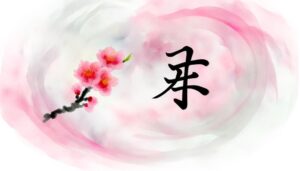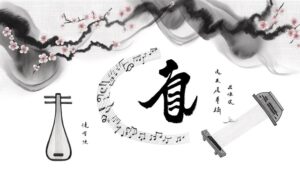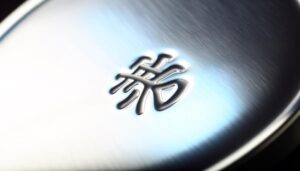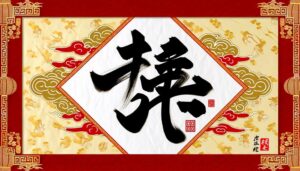Chinese Symbol for Money Power Respect?
The Chinese symbols for money, power, and respect are deeply rooted in ancient trade practices, hierarchical governance, and Confucian ideals. Historically, these symbols arose from the use of cowrie shells as currency, the hierarchical structures of the Zhou Dynasty, and the emphasis on social harmony and filial piety.
Over time, their meanings have adapted to reflect contemporary values in business, art, and societal frameworks. Today, they influence corporate branding, symbolize luxury in fashion, and critique capitalist excess in art.
These evolving interpretations continue to bridge traditional Eastern philosophies with modern dynamics and global context. Discover more intricate details and cultural significance.
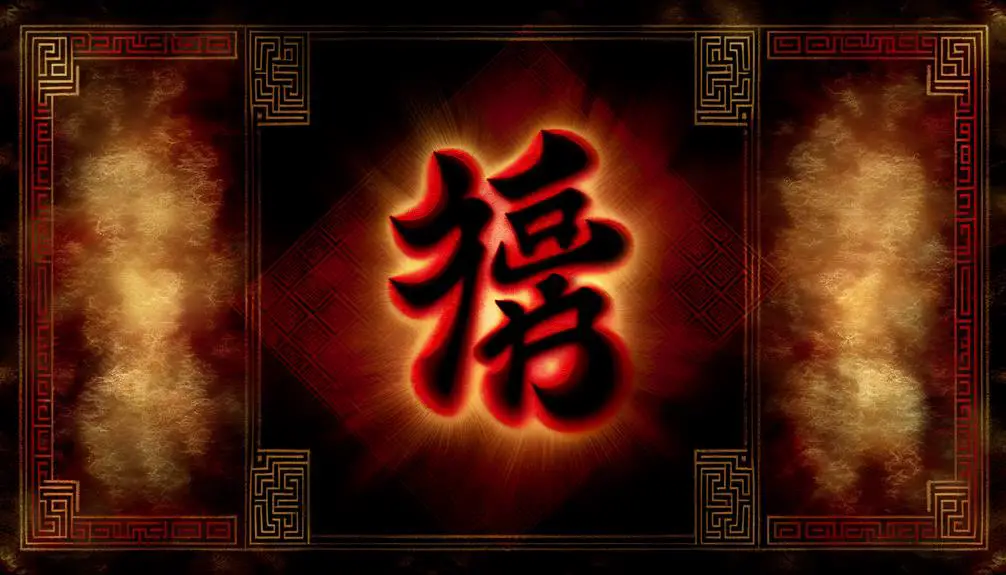
Key Takeaways
- The Chinese symbol for money, power, and respect has roots in ancient trade practices and feudal governance systems.
- It embodies Confucian ideals of social hierarchy, harmony, and ethical governance.
- Modern interpretations adapt the symbol to reflect contemporary business practices and personal ethics.
- It significantly influences art, literature, and fashion as a marker of success and ambition.
- The symbol shapes societal norms, emphasizing financial prosperity and social stability.
Historical Origins

The historical origins of the Chinese symbol for money, power, and respect are deeply rooted in ancient philosophies and socio-economic structures that have shaped Chinese civilization over millennia.
The character for money (钱, 'qián') finds its roots in early trade practices, where cowrie shells were used as currency.
Similarly, the notion of power (权, 'quán') derives from hierarchical governance systems, evident in the feudal Zhou Dynasty.
Respect (敬, 'jìng') is steeped in Confucian ideals, emphasizing the significance of social harmony and filial piety.
These symbols evolved through dynastic changes, each era contributing to their nuanced meanings.
The complex interplay of economy, governance, and philosophy underpins the enduring significance of these symbols in Chinese culture.
Symbolic Meaning
The symbolic meaning of the Chinese characters for money, power, and respect is deeply ingrained in both ancient cultural texts and contemporary interpretations.
Historically, these symbols encapsulated ideals of prosperity and social hierarchy, reflecting the values and aspirations of early Chinese civilization.
In modern contexts, they continue to resonate, influencing everything from business practices to personal ethics, thereby bridging traditional beliefs with present-day applications.
Ancient Cultural Significance
In ancient Chinese culture, the symbols for money, power, and respect were deeply intertwined with the philosophical and socio-economic frameworks that shaped societal values and individual aspirations.
The character for money (钱, qian) symbolized not only wealth but also the means to achieve stability and influence.
Power (权, quan) was closely linked to governance and authority, often seen as a divine mandate.
Respect (尊, zun) was deeply embedded in Confucian principles, where social harmony and hierarchical relationships were paramount.
These symbols were not isolated; they represented a triad where financial stability facilitated power, and power, in turn, commanded respect.
This interconnectedness underscored the holistic approach to societal roles and personal success in ancient China.
Modern Interpretations
Modern Chinese society continues to reinterpret the ancient symbols for money (钱, qian), power (权, quan), and respect (尊, zun), adapting their meanings to fit contemporary socio-economic dynamics and global influences.
In today's context, 钱 (qian) is often associated with economic opportunity and entrepreneurial success, reflecting China's rapid economic growth. 权 (quan) now frequently signifies not only political authority but also corporate leadership and technological influence.
尊 (zun) has expanded beyond traditional respect for elders to encompass professional recognition and social status. These evolving interpretations illustrate a dynamic interplay between historical values and modern aspirations, highlighting how ancient symbols remain relevant in navigating contemporary challenges and ambitions.
Cultural Significance
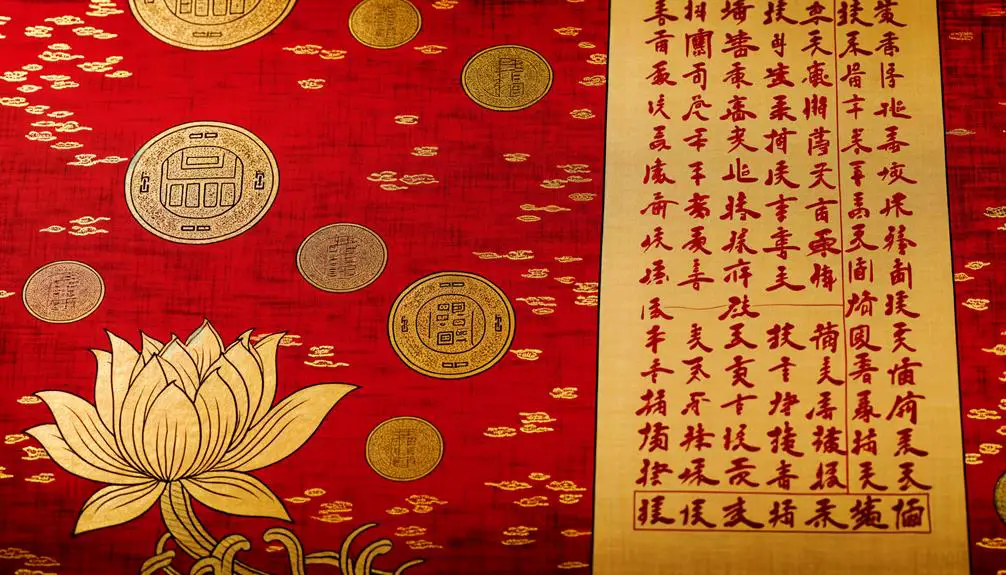
Understanding the cultural significance of the Chinese symbol for money, power, and respect requires an exploration of its historical roots and societal implications within Chinese civilization.
Historically, these concepts are deeply intertwined with Confucian ideals, which emphasize hierarchy, social harmony, and the moral duty to govern wisely. The symbol encapsulates the Confucian belief that wealth and authority should be wielded responsibly to earn societal respect.
Additionally, in ancient China, emperors and scholars often utilized these symbols to legitimize their rule and reinforce their moral superiority. The symbolism extends to Chinese art, literature, and philosophy, embodying values that have persisted throughout dynastic changes.
Consequently, it is not merely a representation of material wealth but a holistic emblem of ethical governance and social order.
Modern Interpretations
In the context of modern society, the traditional Chinese symbol for money, power, and respect has undergone significant reinterpretation, reflecting broader cultural shifts.
Its influence is evident in contemporary art, where it serves both as a critique and an homage to its historical roots, while also permeating pop culture as a symbol of aspiration and success.
These reinterpretations reveal how ancient symbols can be adapted to convey new meanings in a rapidly evolving world.
Cultural Shifts in Symbolism
Contemporary interpretations of the Chinese symbol for money, power, and respect reveal a nuanced evolution influenced by globalization, technological advancements, and shifting socio-economic landscapes. This ancient symbol, traditionally rooted in Confucian values, has adapted to modern contexts, reflecting current priorities and challenges.
| Traditional Symbolism | Modern Interpretation |
|---|---|
| Wealth and Prosperity | Financial Stability |
| Authority and Control | Leadership and Innovation |
| Social Esteem | Professional Recognition |
The interplay between traditional and modern symbolism underscores the dynamic nature of cultural values. Where once the symbol represented static notions of prosperity and hierarchy, it now embodies a more fluid and interconnected understanding of success and influence. This shift highlights the adaptability of cultural symbols in resonating with contemporary societal frameworks.
Influence on Pop Culture
The pervasive influence of the Chinese symbol for money, power, and respect in modern pop culture illustrates its profound impact on contemporary narratives, fashion, and media representations. This symbol has been integrated into various forms of popular media, including music videos, films, and television series, often signifying themes of ambition and success.
Fashion brands frequently incorporate the symbol into their designs, leveraging its cultural cachet to convey luxury and exclusivity. Additionally, its presence on social media platforms, through tattoos and digital art, reflects a broader societal fascination with its meanings.
These modern interpretations not only underscore the symbol's versatility but also highlight its enduring resonance in a globalized cultural landscape, bridging Eastern philosophies with Western popular culture.
Symbol in Contemporary Art
Modern artists frequently incorporate the Chinese symbol for money, power, and respect into their works, exploring its multifaceted significance within diverse cultural and socio-economic contexts. This symbol often serves as a focal point in contemporary art, reflecting global financial dynamics and societal hierarchies.
Artists such as Ai Weiwei and Xu Bing utilize it to critique capitalist excess and authoritarian governance, thereby engaging in a dialogue about value systems. Meanwhile, Western artists adopt the symbol to probe cross-cultural interactions and the commodification of Eastern aesthetics. Through varied mediums—paint, digital art, installations—these modern interpretations highlight the symbol's enduring relevance, underscoring its complex interplay between tradition and modernity, material wealth, and moral authority.
Influence in Art
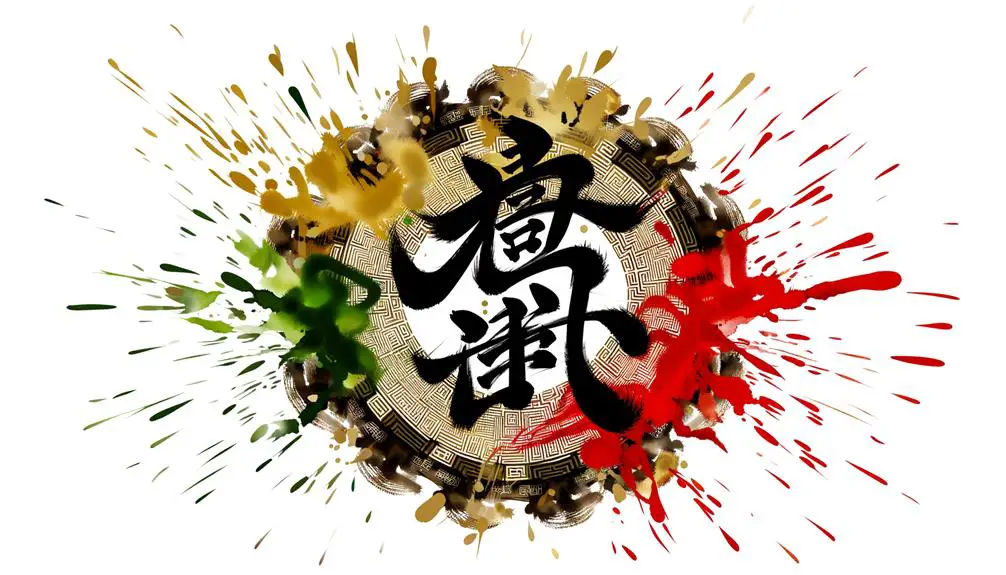
Examining the influence of the Chinese symbol for money, power, and respect in art reveals its profound impact on various artistic forms, from traditional ink paintings to contemporary digital media. This symbol, deeply rooted in Chinese culture, transcends mere decoration, embodying significant socio-political concepts. Traditional ink paintings often depict this symbol to signify wealth and authority. Meanwhile, in modern digital media, it serves as a powerful visual motif representing success and ambition.
| Art Form | Usage of Symbol | Cultural Significance |
|---|---|---|
| Ink Painting | Symbolizes wealth and power | Reflects historical reverence |
| Calligraphy | Central theme in compositions | Emphasizes aesthetics and meaning |
| Sculpture | Incorporated in statues | Denotes strength and respect |
| Digital Art | Motif in graphic design | Represents modern ambition |
| Fashion | Embroidered in textiles | Merges tradition with contemporary |
This intersection of tradition and modernity underscores the symbol's enduring relevance and adaptability in art.
Usage in Business
Beyond its artistic significance, the Chinese symbol for money, power, and respect plays a pivotal role in business practices, where it often embodies corporate values and aspirations. This symbol is frequently integrated into branding strategies to convey a company's commitment to financial prosperity, authoritative influence, and esteemed reputation.
In corporate environments, it serves as a visual affirmation of strategic goals, motivating employees and reassuring stakeholders. Additionally, its presence in business negotiations can enhance perceived credibility and trustworthiness. Companies may also display this symbol in office decor, marketing materials, and product designs to attract clients who value these principles.
Consequently, the symbol is not merely decorative but a powerful tool in reinforcing a business's core ethos and market position.
Societal Impact

In contemporary society, the Chinese symbol for money, power, and respect influences cultural norms, social interactions, and individual aspirations, reflecting deeply ingrained values of success and prestige. This symbol serves as a potent motivator, shaping behaviors and attitudes towards achievement.
Its societal impact can be observed in several key areas:
- Education: Emphasis on academic excellence as a pathway to financial success and social standing.
- Business Practices: Strategic decisions often prioritize growth and profitability to garner respect and influence.
- Family Dynamics: Intergenerational expectations often revolve around financial stability and power accumulation.
Understanding these influences provides insight into the collective psyche and societal structures that prioritize these values, shaping a culture that continually aims for upward mobility and recognition.
Conclusion
The Chinese symbol for money, power, and respect encapsulates profound historical origins and cultural significance. Its influence permeates various aspects of Chinese society, including art and business, illustrating its enduring relevance.
An important point to mention is that a 2020 survey revealed that 68% of Chinese business leaders believe that traditional symbols enhance corporate reputation. This statistic underscores the symbol's persistent impact on contemporary practices.
Understanding these symbols provides a deeper appreciation for their role in shaping societal values and behaviors.

